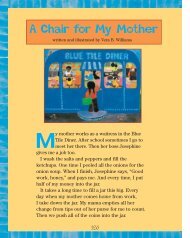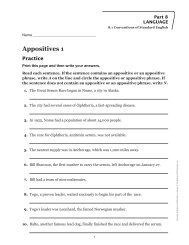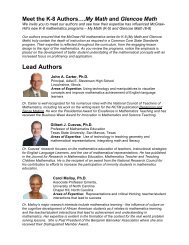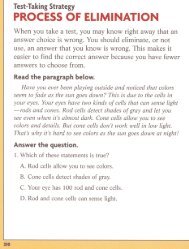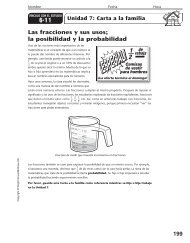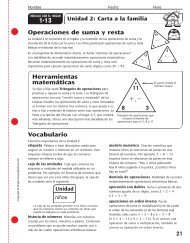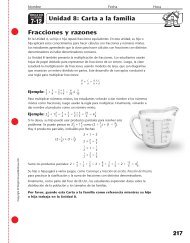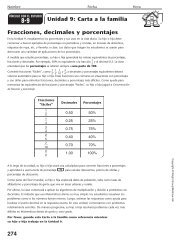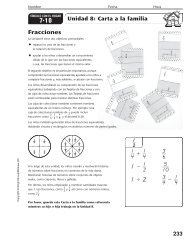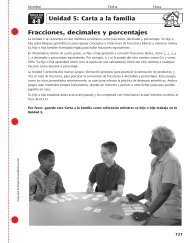Making Sentences - MHEonline.com
Making Sentences - MHEonline.com
Making Sentences - MHEonline.com
Create successful ePaper yourself
Turn your PDF publications into a flip-book with our unique Google optimized e-Paper software.
Beginner<br />
Level Activities<br />
Graphic Organizers Guided Instruction<br />
Practicing Subject-Verb<br />
Recognizing Pronouns Sort photos according<br />
to a corresponding pronoun.<br />
1. Review and post the he, she, and they sight<br />
word cards.<br />
2. Distribute the Recreation photo cards to small<br />
groups of students. Have groups work together<br />
to sort the cards on the Sorting Mat according<br />
to the corresponding pronoun.<br />
EXAMPLE basketball: they; tennis: he;<br />
bowling: she<br />
3. As you are reviewing the groups, model<br />
sentences, and have students repeat.<br />
EXAMPLE They play basketball.<br />
Oral Language Practice<br />
Picture Stories Compose sentences<br />
about a picture.<br />
1. Have students select any card and draw a<br />
picture that shows the concept on the card.<br />
2. When students are finished, select a student’s<br />
photo and ask questions about it.<br />
EXAMPLE hurricane Display the student’s<br />
drawing, and ask the student: Is it windy?<br />
Student says: Yes. You say: It is windy. Have<br />
students repeat.<br />
3. Continue with the same drawing until you have<br />
modeled three sentences.<br />
Photo Descriptions Describe what is<br />
happening in a photo.<br />
1. Select a photo card that shows an action.<br />
EXAMPLE walking, volleyball<br />
2. Model several sentences that describe what is<br />
going on in the picture. Use a <strong>com</strong>bination of<br />
plural and singular nouns to model subject/verb<br />
agreement. EXAMPLE Say: They are walking.<br />
Agreement Recognize that a verb must change<br />
if the number of the subject changes.<br />
1. Review several Animals photo cards. Show a<br />
card, and have students tell what the object is.<br />
Model a sentence. EXAMPLE Show cat, and<br />
say: This cat is an animal.<br />
2. Have students say your sentence. Repeat for<br />
several animals.<br />
3. Show two Animals cards, and model a new<br />
sentence. EXAMPLE Show cat and dog, and<br />
say: The cat and the dog are animals.<br />
Understanding Possessive<br />
Pronouns Identify ownership with possessive<br />
pronouns.<br />
1. Review and post the his, her, your, and my<br />
sight word cards.<br />
2. Identify objects in the classroom. Ask who the<br />
owner is. EXAMPLE Pick up a student’s pencil<br />
and say: Whose is this? Students point to the<br />
correct student. You say: Yes, this is Albert’s<br />
pencil. This is his pencil. Have students repeat:<br />
his pencil.<br />
3. Repeat the activity for her, my, and your.<br />
4. If students understand, have them repeat the<br />
sentences you are modeling. EXAMPLE This is<br />
her book. This is my marker. This is your paper.<br />
Use “To Be”<br />
The is/are .<br />
EXAMPLE<br />
• The cat is an animal.<br />
• The fish are animals.<br />
Extend the Frame<br />
• The dog and the cat are animals.<br />
• Is the cat an animal?<br />
SAMPLE ONLY<br />
©SRA/MCGRAW-HILL. ALL RIGHTS RESERVED.<br />
Sentence Frames<br />
6B SRA Vocabulary Picture Pack for English Language Learners—Primary



